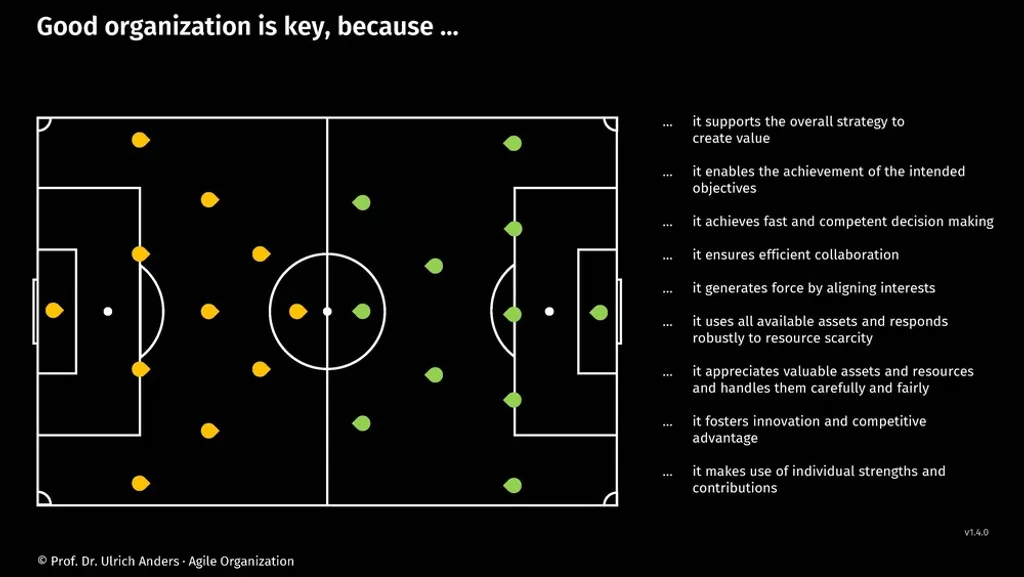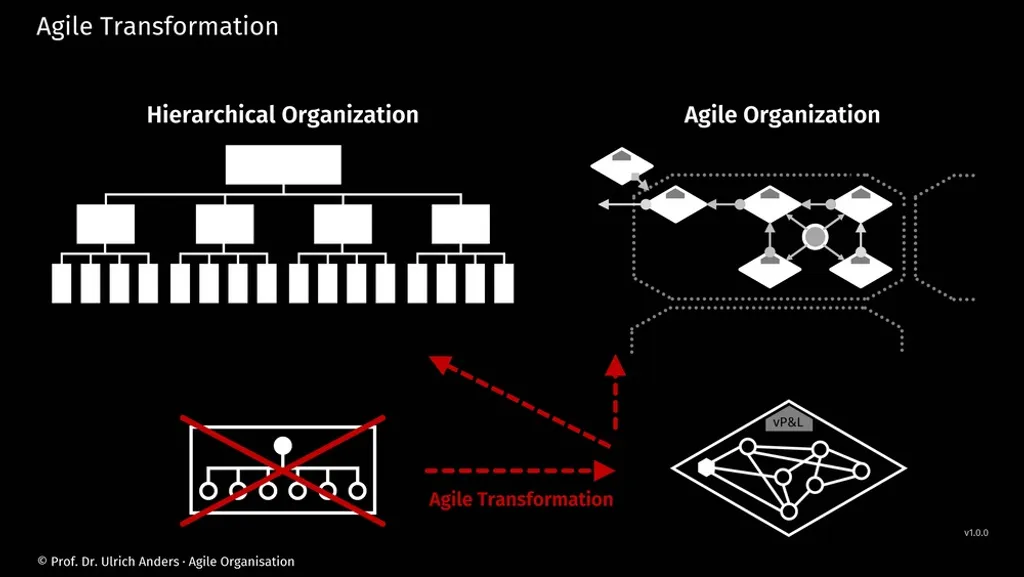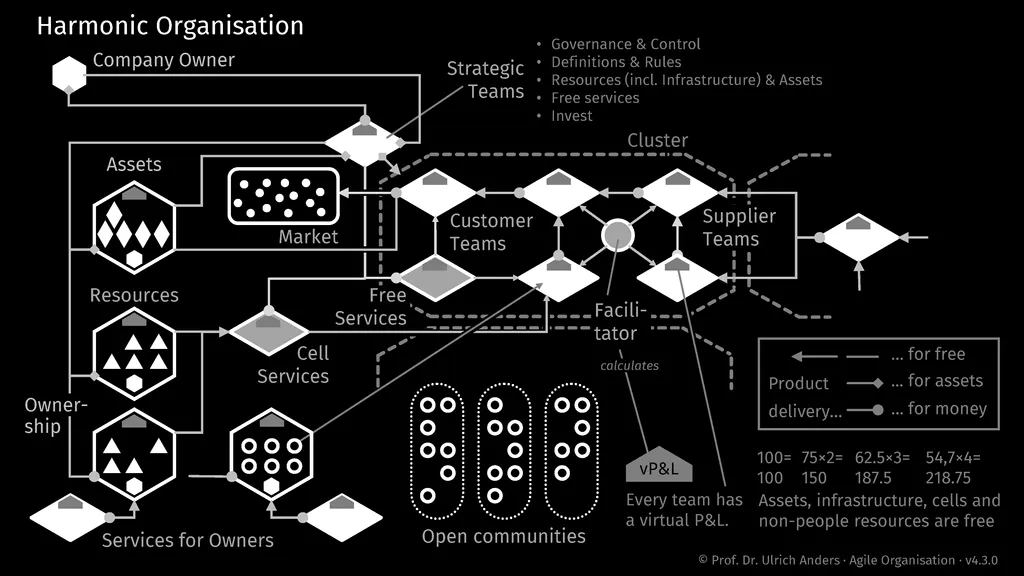AGILE
Agility is the structural ability of an organisation or system to respond and adapt quickly to customer needs or requests, to changes in surrounding conditions or to the environment.
The agile approach is a philosophy and conceptual framework that derives from the Agile Manifesto. The Agile Manifesto was originally formulated for software development but its principles have since been generalized and are now applied to any form of organisation.
Those who embrace the logic, concepts and ideas underlying the agile principles develop an agile mindset. This helps to answers questions of implementation, because details are generally not prescribed.
Please visit https://agile-organisation.com for additional information.
Agile Project Management
Agile project management has become broadly accepted since its introduction in 2001. Compared to classical, hierarchical waterfall project management, agile project management implements a method that focuses on customer satisfaction. To achieve this, customer requests are taken into account as quickly as possible, lengthy planning phases are discarded, iteration cycles are shortened and customer feedback is collected regularly.
A high level of responsiveness, informal and vertical information exchange, and quick decision making are achieved through self-management of the teams and freedom from hierarchy. Efficiency of collaboration and organisation is in focus and promoted through dedicated roles (e.g. Scrum Masters).
Progress, quality and communication are no longer implemented by a higher-level management, but through daily exchange and progress monitoring with the help of so-called dashboards.
The success of agile project management means that more and more companies now want to become agile not only in their projects, but also in their line organisation. They have understood that agility — i.e. a customer-centric approach and fast responsiveness — is the enabler for innovation and for the future.
Sport Teams Are Agile
The organisation of sport teams serves as a good example. Sport teams are naturally organized in an agile manner as they need super fast reaction, team oriented structuring, cooperation, and immediate decision making.
Success is only possible if all involved people pull into the same direction. Coaches, players and the support staff all want to achieve the same objective. Everybody shines through the success of the others. If sport teams choose the wrong organisation they will most certainly not be winners.

Ideal Organisation
Companies have an organisation. This means, that a company has to choose how it wants to organize itself. The ideal organisation does not exist, but the organisational form should be chosen such that it systemically supports the company objectives:
-
To achieve fast and competent decision making based on knowledge advantages information.
-
To enable the cooperative operation of all resources of the company towards the overall company objectives and customers.
-
To break down the company into areas that allow each area to best develop the expertise required for contributing best to the overall objectives.
-
To implement a lossless and efficient interaction and collaboration between all of these resources.
-
To achieve an asset and resource allocation according to priorities.
-
To foster the responsiveness and flexibility of the company towards new market requirements or customer demands.
-
To ensure that new tasks resulting from new products, projects or external requirements easily find a new home to be quickly dealt with.
-
To stimulate the development of new products that will bring the company into a position to turn resources into valuable customer benefit also in the future.
In order to achieve all these objectives organisational models have to solve four main problems:
-
How to structure larger amount of people involved in a company and ensure their cooperation.
-
How to distribute responsibility, because this is the basis for a division of labor.
-
How to distribute decision making authority.
-
How to best maintain and allocate assets as well as resources.
To achieve this, organisations need to explicitly define the 10 Mechanisms of organisation. If these are not defined explicitly they take place implicitly — but obviously somehow and certainly less than optimal.
Agile Organisation
An agile organisation is an organisational form chosen by a company to systemically achieve the following objectives. To be:
-
more customer centric,
-
more efficient, more effective, more robust,
-
more future-proof, more innovative.
The achievement of objectives is in agile organisations typically measured and transparently reported (e.g. by help of dashboards).
An organisation that calls itself agile but does not measurably achieve the above objectives is not truly agile.
The concept of an agile organisation can be applied to a project organisation or to a company organisation.
Hierarchical Organisation
Hierarchical organisations have a number of advantages, but research has largely agreed that their main disadvantages are that they tend to be not very customer-centric, not very adaptable, not very innovative, and not very efficient or robust.
Furthermore, in hierarchies the layers of decision making power and the layers in which the necessary detailed information exist are misaligned. As informing the top layers takes time, hierarchies are usually slow decision makers when it comes to informed decisions. As a certain amount of information is always lost by abstracting it away, hierarchies also tend to be not good in dealing with complexity.
As hierarchies tend to move decision power to the top, they often remove involvement and engagement from the lower levels which leads to a separation of interests.
Distributing responsibilities
In hierarchies the distribution of responsibility takes place through a functional assignment, also along the hierarchical line. This mechanism is not efficient and not unambiguous, but it works to a large extent. That the mechanism is not good can be seen from the fact that (a) responsibilities in hierarchies often either overlap vertically and horizontally or (b) that responsibilities are socialized by fragmentation and thus not really taken. In case of ambiguous, overlapping or minority responsibilities typically the higher hierarchical level bears or must bear the total responsibility, which let’s one wonder why responsibilities were distributed in the first place.
Distributing decision making authority
To enable fast decisions organisations need to make sure that there is a clear relationship between the decision to be taken and the person who has the authority to take it. In hierarchies more important decisions are taken in the higher levels which have also higher authorities.
This is an easy mechanism, but means on the other hand that sometimes necessary decisions are not taken or taken late because the hierarchial layer is not available or too overloaded with too many different pending decisions.
Resource allocation
The resources including the assets of the company are typically controlled, administrated and allocated by the decision making layers. As hierarchies are structured in functions, so is the resource allocation. This leads to the well known territorial behaviour of hierarchies. And this again results in a resource allocation problem. Even though resources would be available in the company overall, they are often not allocated to the teams that need them most to achieve company objectives. As a result, hierarchies tend to waste a significant amount of their resources by not using the efficiently.
Power
Power can not be divided. Either it is kept or it is given away. Once a person gives up some of his/her power, the person is less powerful afterwards. As a result people typically do not give up power voluntarily. Hierarchies as organisational systems have — other than democratic societies — no in-built mechanisms for the separation of power.
Power is defined as the combination of decision making authority and the control over resources. In hierarchies both are in the hands of the same people. Power accumulates when going up the hierarchy. The superior has typically the power of all of his/her subordinates that report into him/her. As a result hierarchical power grows exponentially towards the top.
For that reason, hierarchical organisations are prone to show cases of power abuse. Power abuse describes a situation where a powerful person in a company uses his/her power or control over resources not for the good of the company but for having a personal advantage.
But regardless of a possible abuse of power, the accumulation of power leads to another problem. The more power is concentrated in one hand, the more difficult it is to counter it. The result of unrestricted power is fear. For this reason, steep hierarchies typically develop a high level of fear in the organisation. People do not dare to make a decision, make a recommendation or provide feedback for fear of having an opinion different from the powerful person. As a result, subordinates usually demonstrate agreement with the belief of the more powerful person — a behaviour that removes objections, innovations and new or controversial ideas from companies.
Scientific evidence has shown that in complex situations knowledge sharing and joint analysis is usually better than an individual, albeit informed, opinion.
Structuring Companies
Work needs to be distributed. Research has shown, that too large teams or departments lose oversight and are difficult to (self-)manage. Team sizes should ideally be lower than 10-12 members. As a result companies need to implement structures.
The main advantage of hierarchies is that they provide for structures that are very intuitive to understand and do not need a lot of explanation. Hierarchies come with a clear picture of authority, a clear chain of command, and a clear information travel.
If agile organisations want to overcome the significant disadvantages or hierarchies, they need to to offer alternative mechanism of structuring companies and larger amount of people. Every form of agile organisation, therefore, has to suggest an alternative structuring mechanism. (Alternative structuring mechanisms have, for instance, been introduced with the holacracy, the exponential organisation or the teal organisation.)
As it is more than unlikely that an easier structuring mechanism can be found than the one of a hierarchy, an agile organisation will most certainly always have a higher need for definitions and explanations. As a result, agile organisations come with the overhead of a governance system, that need to be learned and that often is not easy to implement.
Only if agile structuring is successful, agile organisations can pose a real alternative to hierarchies.
Agile Transformation
Agile organisations have the objective to overcome hierarchical deficiencies by offering a very different organisational form. Agile organisations are built rather on flexible roles than on fixed positions. They focus on the customer instead of the C-level in the company. They see top management as enablers, supporters and infrastructure providers rather than commanders.
Agile organisations focus on leadership and self-management rather than on management. They want to bring decision-making power to the people who have the best information. They distribute power, which reduces the risk of abuse of power considerably. They allocate resources and assets to where they are needed with the highest priority. They view ownership of resources and assets as an outcome or a role and not as a consequence of a hierarchical position.
Agile transformation is not a revolution. Quite the opposite. Organisation is a very valuable resource that needs to be carefully treated. It is so valuable since a poor organisation easily lead to a huge waste of all other resources.
Those who consider organisations as valuable resource consider a massive re-organisations as an act of destruction. An organisation should, therefore, not be re-organised, but rather developed in an iterative and step-by-step approach. This makes a valuable resource even more valuable and suitable. Every individual step should add value and bring the organisational form closer to an envisaged ideal form. Agile transformation is a steady and longer process of continuous corrections, refinements and improvements.
It can begin with with understanding the products (incl. services) of each team, department or area. After that, one should identify the customers of each of those products. One typically finds, that many teams do not have a product and if they have, they may not have (internal) customers. This should change.

The next step is to identify ownerships. Resources and assets are very valuable to a company, so it seems perfectly rational that a company should have clear owners who care for them, maintain them, take the necessary decisions about them and allocate them efficiently. However, the reality is, that many companies leave their valuable resources or assets to some degree “unowned” or unattended. This should change, too.
All of this can then be developed step-by-step. Products will be specified, (internal) customers will be identified and owners will be nominated. Structures will be adapted. An internal product and customer perspective helps to develop scope economies. Departments will align and cooperate better. The organisation will transform as a consequence and will develop more and more into an agile direction.
Harmonic Organisation©
The Harmonic Organisation© is one particular form of agile organisation. It is the result of more than 10 years of research and observations on the topic of organisational forms. It is based on the following principles:
-
Direction: An organisation is most forceful, if it aligns all its resource. A natural way of aligning all resources is to direct them all towards the end customer and the products that are offered to such end customers.
-
Product perspective: The company is only comprised of teams. Every team offers and receives products. Teams that do not have a product or an (internal) customer for their product do not exist. If several teams request the same product from the same team the efficiency of the company increases.
-
Customer-supplier-relationship: The whole company is structured by help of a thorough customer-supplier-relationship. Every team is either an internal customer or a supplier to an internal or external customer. The customer receives the product and pays for it.
-
Ownership: A company only has four building blocks: resources, tasks, products, assets. Every element within these building blocks need a unique owner. The responsibility of a person results from the ownership of the element. Special roles are resource owners, product owners, and asset owners. All people own the tasks that they need to fulfil.
With the above four principles, the Harmonic Organisation© claims that it has a simple and natural structuring mechanism, that removes the need for complex governance systems. It systemically removes the inefficiencies that result from dealing with complexity, asset allocation, or the information-decision-divergence.
There are no teams that do not have at least one (internal) product and therefore at least one (internal) customer. Customer-supplier relationships are well known and thus comparatively easy to implement in practice. Cooperation is also naturally incentivized. It is advantageous for teams to use an (internal) product that is already in demand by other teams. It is also advantageous for a team to give its product to as many (internal) teams as possible.

The distribution of responsibility in the Harmonic Organisation© is based on the principle of ownership. Companies have only 4 groups of elements. Resources, Tasks, Products and Assets. Each element in these groups has exactly one owner. The responsibility results from the ownership and no longer from the functional distribution. This also provides a clear distribution of responsibility that works without overlap.
The Harmonic Organisation© is called harmonic because it tries to systemically achieve an alignment of interests in the company. All teams naturally contribute to the same goal, just like an orchestra, where every musician contributes to the overall composition.